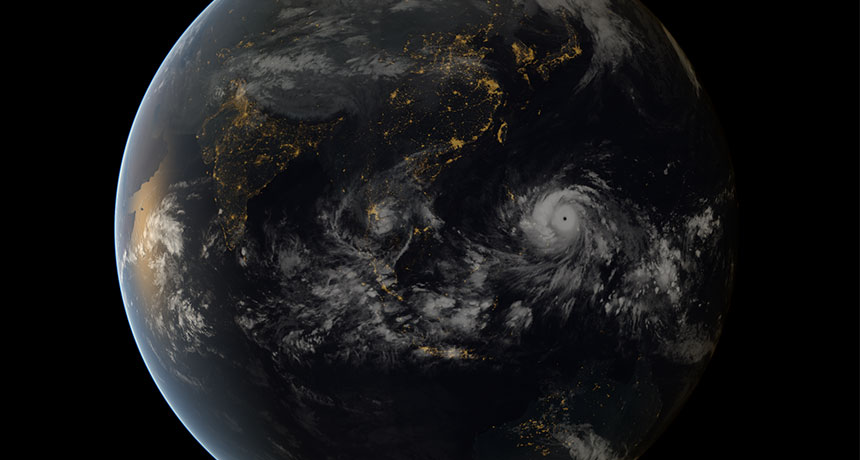Titanic typhoons are in the forecast
If history is any guide, warming subsurface water expected to fuel bigger storms

TITANIC TYPHOONS Powerful storms such as Typhoon Haiyan, pictured in this composite image, can cause extensive devastation in the western Pacific Ocean. The average intensity of typhoons like these will rise significantly by the end of the century, new research predicts.
Copyright 2013 EUMETSAT/JMA







